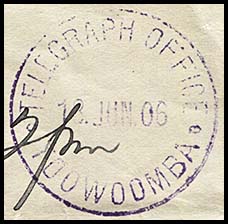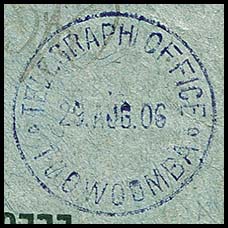Post & Telegraph Offices on the first line.
- Home, index, site details
- Australia 1901-1988
- New South Wales
- Overview of NSW
- Telegraph lines
- Telegraph Offices
- Date stamps
- Forms
- Envelopes
- Rates
- Stamps
- Queensland
- Overview of Qld
- Telegraph lines
- Telegraph offices
- Date stamps
- Forms
- Envelopes
- Rates
- Stamps
- South Australia
- Overview of SA
- Telegraph lines
- Telegraph Offices
- Date stamps
- Forms
- Envelopes
- Rates
- Stamps
- Tasmania
- Overview of Tasmania
- General developments
- Reports
- Organisation
- Telegraph lines
- Telegraph Offices
- Date stamps
- Railway lines
- Forms
- Envelopes
- Rates
- Stamps
- Overview of Tasmania
- Victoria
- Overview of Vic.
- Telegraph lines
- Telegraph offices
- Date stamps
- Forms
- Envelopes
- Rates
- Stamps
- Ephemera
- Western Australia
- Overview of WA
- Telegraph lines
- Telegraph Offices
- Date stamps
- Forms
- Envelopes
- Rates
- Stamps
The following Telegraph Offices are included in this page:
| Bowenville | Drayton | Grandchester | Ipswich | Ipswich Railway TelegraphStation |
| Toowoomba | Warwick | Warwick Railway Telegraph Station |
|
The Telegraph On 15 December 1866, The Queenslander reported that "of the fifty town lots in the town of Bowenville, one acre each, upset price £8 per acre, but one lot was sold. The twelve country lots near the town of Bowenville were purchased at the upset price of £1 per acre". (Ed: Local postage was then 1d and there were 240 pennies in £1. Compare the above prices using 240 times our cost for posting a local letter now.) Bowenville was sometimes referred to by its alias - the Long Waterhole. |
|
An oval ELECTRIC TELEGRAPH OFFICE was issued to the Bowenville office:
|
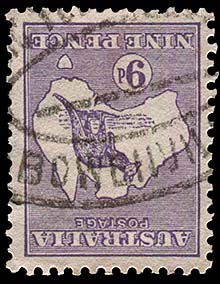 |
|
Originally called Bigge's Camp, the name Grandchester become more common during the 1860s. The railway was opened in July 1865 as Grandchester and so the name was generally used thereafter. The Telegraph Office opened in 1864 as Bigge's Camp. It is between Ipswich and Gatton. |
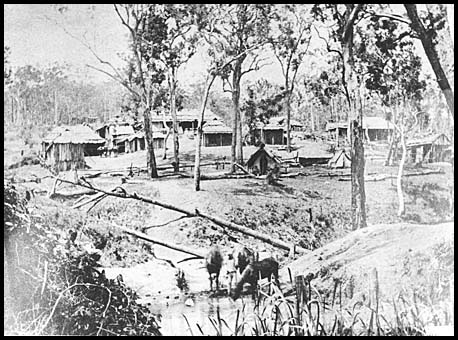 Grandchester in 1867 - about two years after the railway had been opened. Courtesy of John Oxley Library. |
A special circular date stamp was issued to Ipswich for use with telegraphs.
|
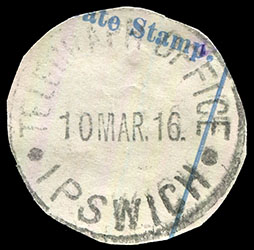 10 March 1916. Used on an ordinary rate delivery form (which cannot be identified because of the dreadful trimming!!!). |
 27 February 1917. |
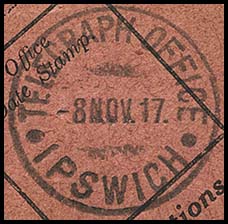 8 November 1917. Used on an Urgent rate delivery form _ Possibly QI-DU-1 . |
||
| Slogan cancellation:
A SEND A TELEGRAM slogan cancellation was used at Ipswich between 14 April 1939 and 9 May 1940. |
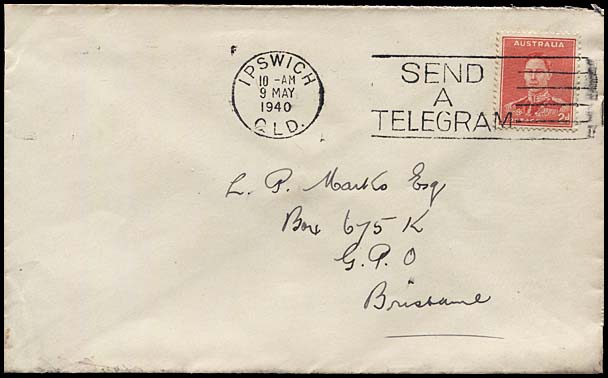 9 May 1940. A over EG (Die 1). |
|
Three formats for a steel TELEGRAPH date stamp were used at Toowoomba:
|
|
Used on QC-EO-7. |
|
On 2d grey Kangaroo perfin McP. |
|
|
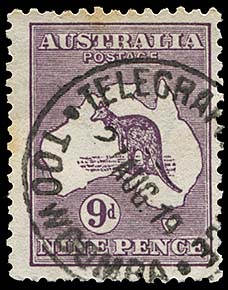 21 August 1919. |
 12 May 1936. |
|
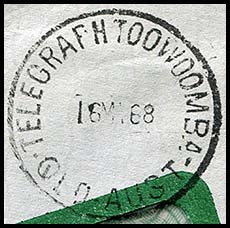 16 May 1968. Used on AA-EC-3Ad (67). |
|
 Toowoomba.jpg) Confirmatory Copy delivery envelope (AA-EC-3Ad (67)) used at Toowoomba 16 May 1968. |
||
A SEND A TELEGRAM slogan cancellation was used at Toowoomba: Date stamp: Circle. Base inscription: Earliest date of this format: Latest date of this format: Characteristics: Die 4A - |
 13 April 1938. |
|
The Telegraph Office was opened on 22 October 1861 at Albion Street. The Post Office had been opened on 1 January 1848 as a receiving office by New South Wales in the Moreton Bay District. It conducted business from W. H. Brown's store at the corner of Albion and Albert Streets.
It was one of the 15 Post Offices opened by New South Wales in the Moreton Bay District and it was transferred to Queensland on 1 December 1859. |
||
About two weeks after the Queensland inter-colonial line had been opened, a reporter from the Courier visited the new Telegraph Office through the courtesy of the Station Master: "I cannot say I was very favorably impressed. The Office seemed to me to be far too small for an important station, neither do the officer's private quarters seem the most comfortable in the world. Government, however, will no doubt in time, when they see the profits to be realised, build on their own "hook". It is difficult in country towns to rent buildings suitable for purposes of this description" |
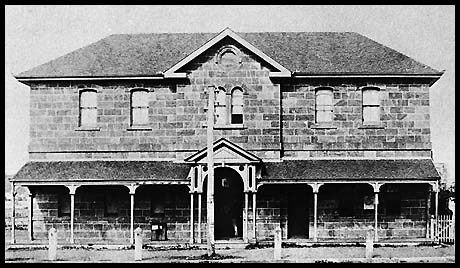 This new stone building, erected in 1870 in Albion Street, combined the formerly separate post and telegraph services. |
|
 Warwick Post & Telegraph Office in the early 1880s. These buildings, situated in Albion Street, include the Lands Office on the right, the Post & Telegraph Office in the centre and Russell Wilkins & Co., on the left |
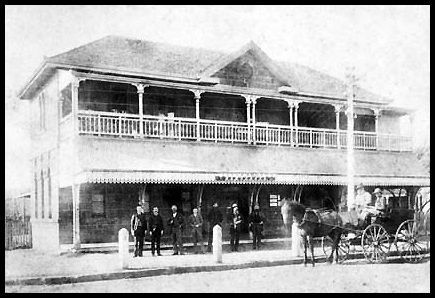 Picture taken about 1889 - renovated in 1898. Picture taken about 1889 - renovated in 1898. |
|
 Picture taken about 1902. |
In 1880, 8,016 messages were sent including 933 OHMS messages. The telegraph staff consisted of an Electric Telegraph Station Master, 1 line repairer, 1 clerical assistant and 1 messenger. As was (and still is) common in Queensland, severe storms strike all too regularly and damage is sugnificant. In July 1893, the North Queensland Register was one of a number of newspapers reporting "A heavy thunderstorm occurred at Warwick this morning. The Post and Telegraph Office was struck by lightning, doing considerable damage to the wires and building". |
Warwick Railway Telegraph Office. In 1880, 2,228 messages were sent including 1,827 OHMS messages. The staff of the Telegraph section consisted of one operator. |
||
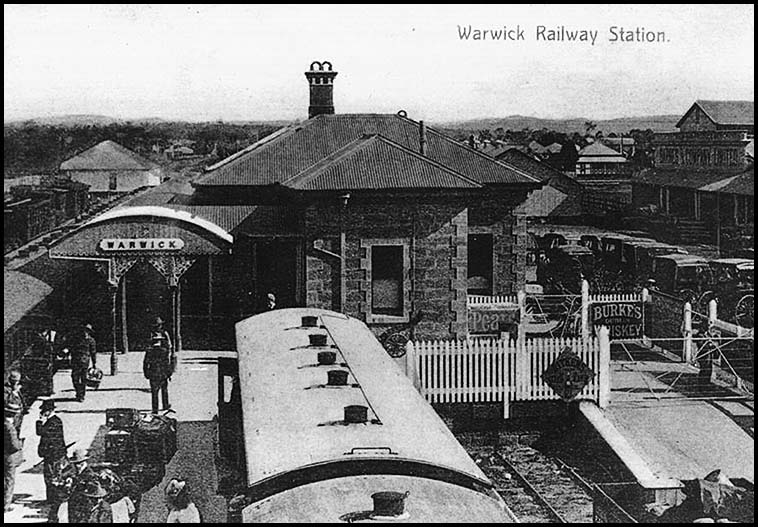 Warwick Railway Station about 1912. |
| No special date stamp for use with telegraph work appears to have been issued to Warwick.
A SEND A TELEGRAM slogan cancellation was used at Warwick. |
|
|
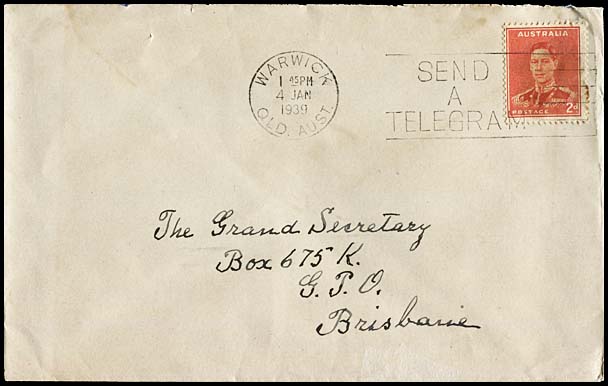 4 January 1939. |
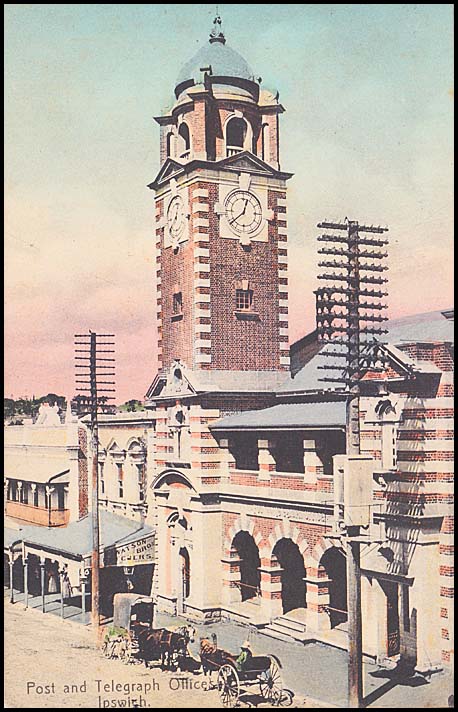
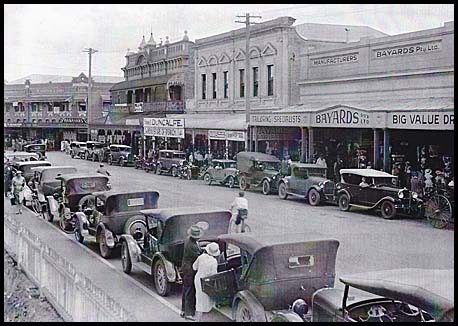
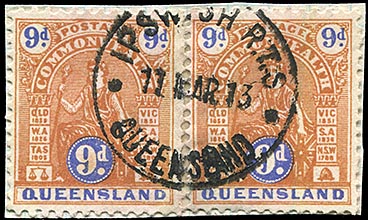
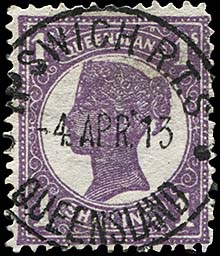
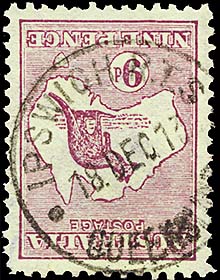
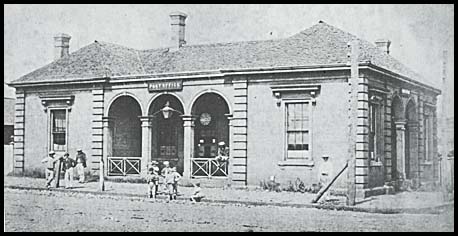
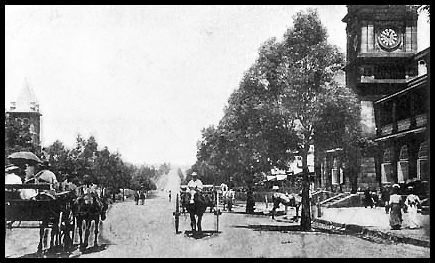
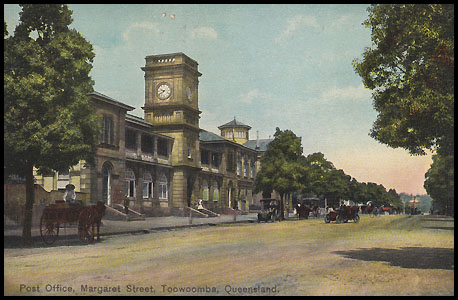 Picture taken about 1900.
Picture taken about 1900. 